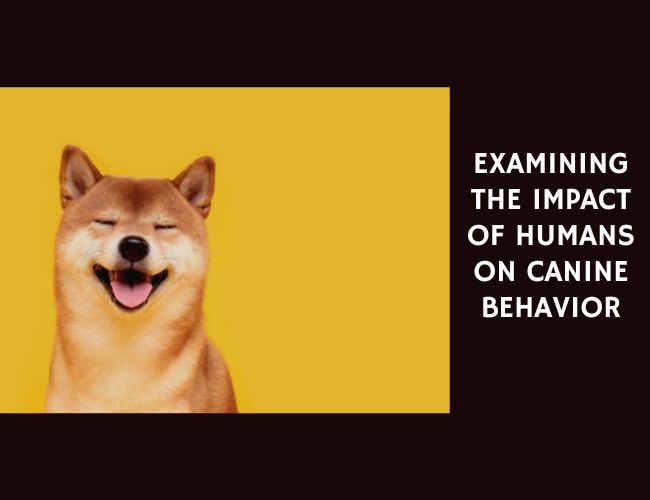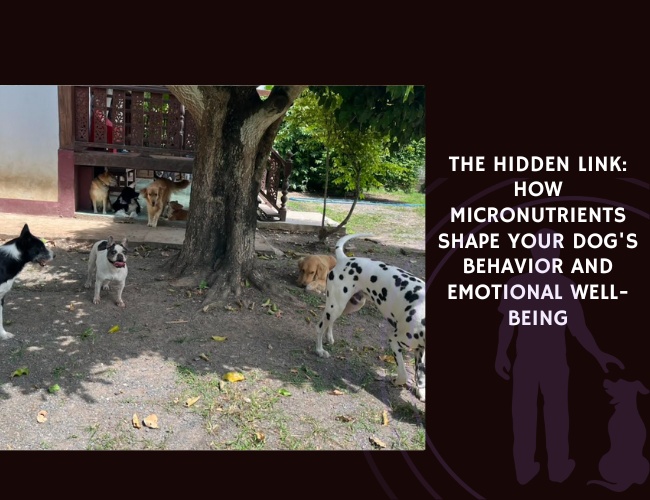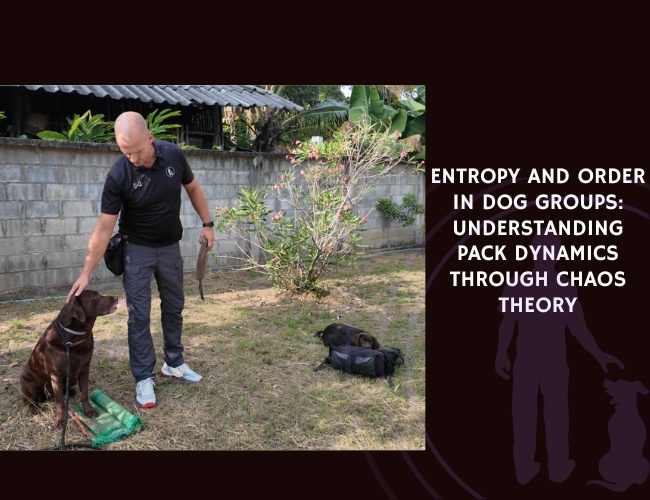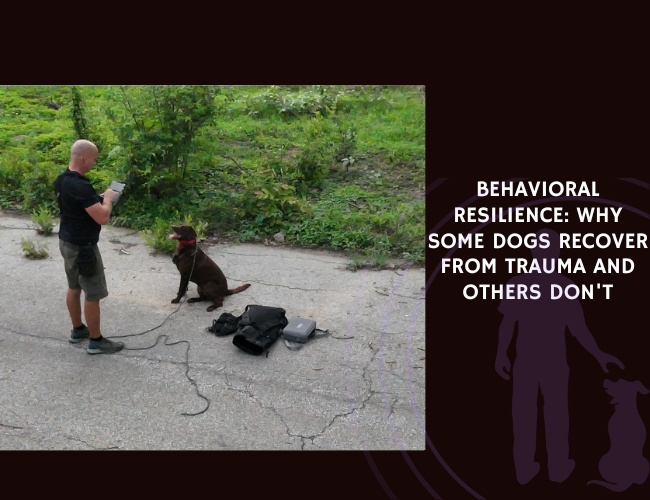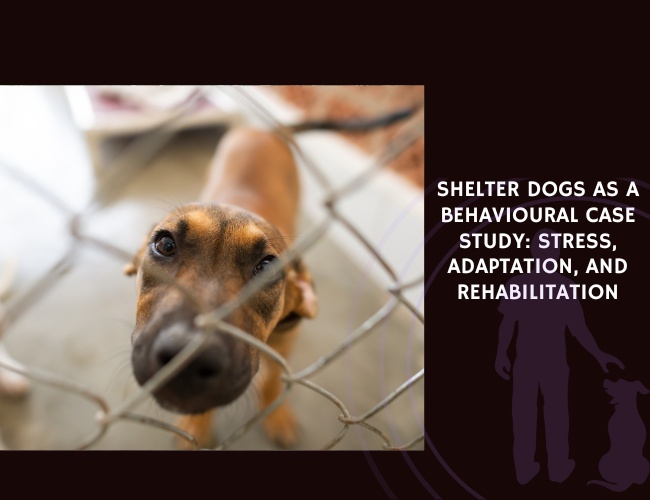Let’s embark on an exciting journey exploring how we, as humans, play a significant role in shaping our canine companions’ behavior. This influence is not just limited to the conscious interactions we share with our pets but extends to subtle cues we may not even be aware of.. Our actions, body language, and even our emotions can shape how our dogs behave and respond to different situations.
Firstly, dogs are incredibly perceptive animals. They have evolved alongside humans for thousands of years, becoming attuned to our behaviors and learning to interpret our signals. They can sense our moods and emotions through subtle cues such as facial expressions, body language, and even the pheromones we emit. If we are anxious or stressed, our dogs may pick up on these signals and mirror our emotions, potentially leading to anxious or reactive behavior in them.
Furthermore, our actions and interactions with our dogs play a crucial role in shaping their behavior. Dogs are social animals, and they seek guidance and approval from their human companions. When we provide clear and consistent boundaries, rewards for desired behavior, and discourage unwanted actions, we create a framework for our dogs to understand what is expected from them. This helps them feel secure and confident in their environment.
However, it’s important to recognize that our influence on our dogs’ behavior goes beyond direct training and interactions. Dogs learn by observing us and the world around them. They often mimic our actions, whether positive or negative. For example, if a dog sees their owner jumping up and down excitedly when they arrive home, they may interpret this as a cue to become hyperactive or excessively bark. On the other hand, if they observe their owner calmly greeting visitors, they may learn to do the same.
Additionally, our lifestyle and daily routines have an impact on our dogs’ behavior. Dogs are creatures of habit and thrive on routine. If we maintain a consistent schedule for feeding, exercise, and playtime, our dogs will feel more secure and content. Conversely, erratic schedules or neglecting their needs can lead to frustration or anxiety, which may manifest as destructive behavior or disobedience.
It is also worth noting that dogs possess a remarkable ability to pick up on our intentions and motivations. They can sense when we are stressed, happy, or sad, and they often respond accordingly. Studies have shown that dogs can even detect changes in human body odor associated with specific emotions, such as fear or happiness. This sensitivity allows them to provide comfort and support during challenging times, further strengthening the bond between humans and dogs.
In conclusion, our influence as humans on our canine companions’ behavior is profound and multifaceted. From conscious interactions to subconscious cues, our actions, emotions, and routines all shape how our dogs perceive and respond to the world around them.
The Power of Voice and Body Language
Interestingly, our dogs are always observing us. They continuously monitor our body language, listen to our tone of voice, and respond to the commands we teach them. Whether we’re calmly giving a sit command or gesturing for them to fetch a ball, they’re actively interpreting our actions and responding accordingly. In fact, studies suggest that dogs are incredibly perceptive, able to distinguish between different human expressions and vocal intonations (Scientific Reports, 2016).
Influence Through Learned Commands
Another intriguing aspect of this human-dog dynamic lies in the power of learned commands. Dogs don’t naturally understand “sit”, “stay”, or “fetch”. These are behaviors we shape through consistent training and reinforcement. To put it simply, when we consistently pair a command with a specific action and reward our dogs for correctly responding, we’re essentially conditioning them to associate that command with the desired action.
Understanding Conditioned Behavior
This form of learning, often referred to as conditioning, has long been studied by scientists. Made famous by psychologist Ivan Pavlov in the late 19th century, conditioning is a process where an organism learns to connect a neutral stimulus (like a command) with a significant one (like a treat). Over time, the organism begins to respond to the neutral stimulus in anticipation of the significant one. In our case, dogs learn to associate commands with specific actions and rewards, effectively shaping their behavior.
As we delve deeper into this fascinating topic in the upcoming sections, we’ll explore various dimensions of this human-dog relationship. From the importance of communicating effectively with our dogs, to understanding how our emotions can impact their behavior – there’s plenty to unravel. So, get ready to enrich your bond with your canine companion by gaining a deeper understanding of their behavior and your role in shaping it.
Communication between Humans and Dogs
The mutual understanding between humans and their four-legged companions is built on a foundation of commands. These verbal cues serve as a medium for expressing desires and expectations, a way to communicate that transcends the boundary of different species. The beauty lies in its simplicity; with just a few words or gestures, we can instruct our dogs to sit, stay, or fetch.
The Power of Commands
Commands are more than mere words; they’re tools that can both initiate and terminate actions. This dual function is key in shaping the human-dog dialogue. For instance, a stern “No!” can effectively stop a dog from chewing on your favorite shoes, while a cheerful “Fetch!” can prompt an enthusiastic game of catch. This system of commands allows us to guide our dogs’ behavior, fostering a mutual understanding and respect.
Human-Dog Communication vs Human-Human Communication
Interestingly, this mode of communication shares similarities with how humans interact with each other. Much like how we use language to express our needs, wishes, and boundaries, we do the same with our canine companions through commands. In a sense, we have created a simplified, yet effective, form of language that allows us to engage in a meaningful exchange of information with our pets.
Just as we use intonation, volume, and body language to add depth to our human conversations, these elements also play a significant role in our interactions with dogs. A command spoken in a stern tone or accompanied by a firm hand gesture will carry a different message than the same command delivered in a softer manner. This complexity mirrors human communication, adding layers to our dialogues with dogs, and emphasizing the richness of our interspecies relationships.
In essence, communication between humans and dogs hinges significantly on the effective use of commands. Just as words are vital in human interaction, commands form the crux of our dialogue with dogs. They allow us to convey our intentions and expectations clearly, creating a bond based on mutual understanding and respect. Remember, every “Sit”, “Stay”, or “Fetch” is a step towards a deeper connection with your canine companion.
The Role of Human Emotions in Canine Behavior
Have you ever noticed how your dog seems to mimic your emotions? If you’re feeling blue, they might seem a bit down too. Or, if you’re excited about something, they’re bouncing off the walls with you. This isn’t a coincidence; our emotions significantly impact our canine companions. Let’s delve into this fascinating dynamic.
How a Human’s Mood Impacts a Dog’s Behavior
Studies have shown that dogs are incredibly perceptive creatures capable of picking up on their owner’s moods. They can sense when we’re happy, sad, stressed, or relaxed. This ability likely stems from the thousands of years dogs have spent living alongside humans, leading to an evolution of their empathetic capabilities. A study by Albuquerque et al. (2016) found that dogs can even distinguish between different human emotional expressions. What does this mean for your furry friend? Well, your mood can create a ripple effect, influencing your dog’s behavior. For instance, if you’re anxious, your dog may also become restless or agitated.
The Influence of Body Language and Tone of Voice
But how exactly do dogs pick up on our moods? A significant part of it comes down to non-verbal cues. Dogs are experts at reading our body language and tone of voice. When we’re upset or angry, our movements may become more abrupt and our voices harsher. On the flip side, when we’re happy or relaxed, our movements are smoother and our voices softer. Dogs pick up on these subtle changes, and they adjust their behavior accordingly. So, if you’ve ever wondered why your dog seems extra cuddly when you’re feeling low, it’s because they’re responding to your body language and tone of voice.
Dogs’ Hesitation to Follow Commands Based on the Owner’s Emotional State
Interestingly, a dog’s keen sense of their owner’s emotional state can influence their response to commands. A study by Merola et al. (2012) found that dogs were less likely to interact with an object if their owners displayed disgust towards it. This suggests that dogs may hesitate to follow a command if they sense negative emotions from their owner. Hence, if you’re feeling frustrated during a training session and your dog is not following your commands as expected, it might be worth taking a break until you’re calmer.
In essence, our emotions and the way we express them play a vital role in shaping our dogs’ behavior. Understanding this can help us communicate better with our furry friends, ensuring a harmonious and emotionally balanced relationship. So, next time you’re interacting with your dog, remember that they’re tuned into your feelings, and adjust your behavior accordingly.
The Importance of the Bond between Humans and Dogs
The bond between humans and their canine companions can be a powerful one, with various factors contributing to the strength and nature of this connection. Much like human relationships, the bond between a dog and its owner is influenced by certain elements such as trust, communication, time spent together, and mutual respect. These aspects lay the foundation for a strong and healthy relationship.
Factors Determining the Human-Dog Bond
Trust forms the backbone of any relationship, including that between humans and dogs. A dog who trusts its owner is more likely to listen and respond positively to commands. This trust is built through consistent behavior from the owner, fulfilling the dog’s needs, and treating the dog with kindness and respect.
Communication also plays a vital role. Just as we communicate with each other using language, tone, and body language, the same applies to our interaction with dogs. Consistent, clear commands paired with appropriate body language help improve the understanding between dogs and their owners.
Finally, the time spent together is crucial. Quality time strengthens the bond, whether it’s going on walks, playing fetch, or even just relaxing together. This shared time creates a bond of companionship and loyalty that is uniquely profound.
The Impact of Living Conditions and Relationships on Dog Behavior
Living conditions significantly impact a dog’s behavior. Dogs that live in a safe, comfortable environment where they are well-cared for tend to display more positive behaviors. They are more likely to be relaxed, happy, and responsive to their owner’s commands. In contrast, dogs living in stressful or neglectful conditions may exhibit negative behaviors such as aggression, fear, or anxiety.
The relationship with the owner also has a profound effect on a dog’s behavior. Positive reinforcement techniques, patience, and understanding can encourage good behavior and obedience. Conversely, harsh training methods or neglect can lead to behavioral issues and a lack of trust in the owner.
Finding the Ideal Balance in the Human-Dog Relationship
While a close bond with our dogs is desirable, it is important to strike a balance to avoid unhealthy emotional dependence. Dogs should be encouraged to have some level of independence. Over-dependence on the owner can lead to separation anxiety and other behavioral problems when the owner is not around.
To achieve this balance, owners can gradually accustom their dogs to spending time alone. This could be through leaving the dog alone for short periods initially, then gradually increasing the duration. Providing toys and activities to keep the dog occupied during these times can help make this process smoother.
The human-dog bond is truly special, filled with unconditional love and mutual respect. By understanding and nurturing this bond, we can ensure a rewarding relationship for both the dog and the owner.

The Impact of Dog’s Mentality, Character, and Nature
Just as humans have unique personalities, so do our furry friends. In fact, a dog’s mentality, character, and nature can significantly influence their behavior. This is something that pet owners should keep in mind, as it can provide valuable insights into the best ways to interact with and train their dogs.
The Role of a Dog’s Mentality, Character, and Nature
Every dog has its own unique temperament, shaped by factors such as their breed, upbringing, and individual experiences. Some dogs may be naturally more timid or aggressive, while others might display traits of curiosity or complacency. These innate characteristics can greatly impact a dog’s behavior. For instance, a naturally curious dog might be more likely to explore its surroundings and seek out new experiences, while a dog with a more reserved nature might prefer to stick to familiar environments and routines.
Interplay Between Canine Characteristics and Human Influence
It’s important to note that a dog’s inherent traits don’t exist in a vacuum. They interact with the influences exerted by their human companions in complex ways. For example, a naturally timid dog might become more confident in response to a human’s patient and encouraging behavior. Conversely, an assertive dog might become overly dominant if not properly trained and guided by its owner. Understanding these dynamics can help pet owners tailor their approach to training and interacting with their dogs in a way that respects and takes into account their dogs’ unique personalities.
Understanding Your Dog for Better Influence
By understanding their dog’s mentality, character, and nature, pet owners can better influence their dog’s behavior. This doesn’t mean trying to change who the dog is at its core, but rather working with their inherent traits to foster positive behaviors and discourage negative ones. For example, a dog with a strong prey drive might benefit from activities that allow them to channel this instinct in a controlled manner, like fetch or tug-of-war games.
Furthermore, understanding your dog’s unique personality can strengthen the bond between you, leading to a healthier and more harmonious relationship. It allows you to anticipate your dog’s needs and reactions, reducing potential misunderstandings and conflict. Moreover, it’s also the foundation for establishing effective communication, which we discussed in Section 2, that will ultimately result in desired behaviors.
Conclusion
As we draw this exploration to a close, let’s revisit the key points we’ve discussed. We started by recognizing that humans consciously or unconsciously use voice, body language, and learned commands to influence canine behavior, which can be seen as a form of learned conditioning. This communication plays a pivotal role in how dogs respond to us, with commands initiating or terminating actions and mirroring the nuances of human-human dialogues.
Our emotional states also play a significant role in shaping our dogs’ responses to us. Dogs are intuitive creatures and can pick up on subtle shifts in our moods through our body language and tone of voice. They might even hesitate to follow a command if they sense an unpleasant emotional state radiating from their human companion.

Our emotional states also play a significant role in shaping our dogs’ responses to us. Dogs are intuitive creatures and can pick up on subtle shifts in our moods through our body language and tone of voice. They might even hesitate to follow a command if they sense an unpleasant emotional state radiating from their human companion.
Furthermore, the bond between a dog and its owner goes beyond simple obedience to commands. The depth of this relationship is determined by various factors, including living conditions and the quality of interaction with the owner. Striking a balance in this relationship is crucial to avoid fostering an unhealthy emotional dependence in the dog.
We also acknowledged the inherent individuality of each dog, recognizing that a dog’s mentality, character, and nature play a vital role in their behavior.
Understanding these aspects can significantly improve how we influence our dogs, leading to more harmonious interactions.
The insights we’ve gleaned from this discussion underline the importance of understanding the extent of human influence on canine behavior. Our dogs are not mere passive recipients of our commands; their responses are a complex interplay of learned conditioning, emotional cues, relational bonds, and individual characteristics.
By understanding these elements, we can foster healthier, more rewarding relationships with our canine companions. We should strive to apply this knowledge in our day-to-day interactions with our dogs, enriching both their lives and ours. Therefore, I encourage you, dear reader, to reflect on your relationship with your dog. Understand them, communicate effectively, respect their individuality, and establish a healthy bond. Remember, the joy of having a pet isn’t just about teaching them tricks, it’s about growing together and learning from each other.

